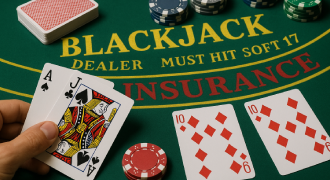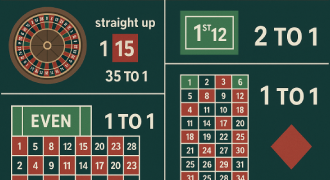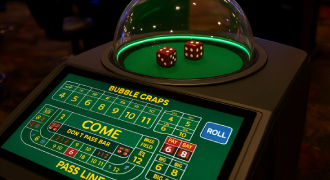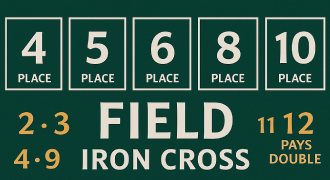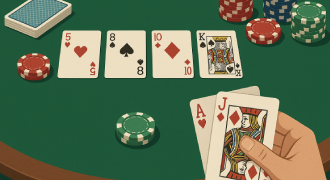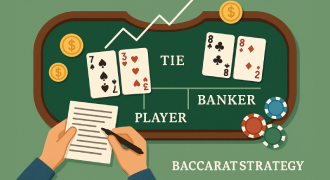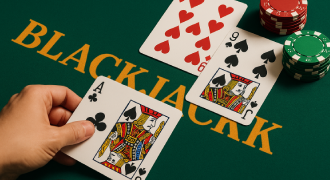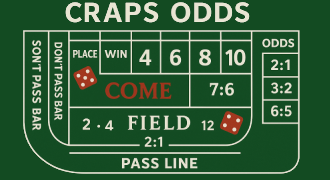Poker Odds: Probabilities and How to Use Them
Poker rewards disciplined curiosity, and the math beneath each decision converts uncertainty into measured action. The phrase poker odds captures how likely events compare to the price you pay, letting you trade chips only when the numbers justify the risk. By translating frequencies into expected value, you turn impulse into a repeatable process that survives long sessions, changing opponents, and volatile runouts.
What Are Poker Odds and Why They Matter
Every bet offers a price, and every draw offers a chance, so your task is to compare those quantities cleanly and consistently. When players internalize relative frequencies, they stop guessing and start budgeting risk in ways that compound edges across hundreds of decisions. Odds are not predictions; they are a framework that keeps you honest while variance ebbs and flows.
You can express probabilities as percentages, ratios, or equity shares against an opponent’s range, and each lens can be helpful in different moments at the table. Learning to read poker hand odds streamlines your choices when time pressure is real and pots grow quickly.
When people say the term again, they often focus on outcomes on the next card or by the river rather than on grand narratives about luck or fate. Well-tuned instincts ride on a spine of examples, memorized benchmarks, and post-session reviews that test your assumptions against hard data.
Cheat sheet table on probabilities in poker:
|
🎲 Situation / Hand |
📊 Probability / Odds |
💡 Practical Tip |
|
Pocket Aces (pre-flop) |
~0.45% (1 in 221 hands) |
Premium starting hand; play aggressively |
|
Flopping a Set with Pocket Pair |
~11.8% |
Bet for value; high implied odds |
|
Flush Draw on Flop |
~34.97% to hit by river |
Consider pot odds before calling |
|
Open-Ended Straight Draw |
~31.5% to hit by river |
Compare odds vs. bet cost; fold if not profitable |
|
Top Pair on Flop |
Varies by board texture |
Value bet carefully; beware overcards |
|
Two Pair on Flop |
~2% |
Strong hand; protect against straights/flushes |
|
Royal Flush |
~0.0032% |
Extremely rare; consider long-term expected value |
Understanding Pot Odds and Implied Odds
This section introduces the price you are being laid right now versus the potential extra chips you can win if you complete a draw and get paid. In practice, immediate price governs the baseline call or fold decision, while future profitability depends on stack depth, position, and your opponent’s willingness to invest more chips on later streets.
How to Calculate Pot Odds
A fast way to evaluate calls is to compare the call size to the total pot after your call, then convert that ratio to a break-even equity threshold. If the equity of your draw exceeds the threshold, the call is profitable; if not, you fold and keep your stack elastic for better spots.
Many newcomers search for how to calculate poker odds and discover the “Rule of 2 and 4,” which approximates your chance to improve by multiplying outs by two from turn to river or by four from flop to river.
For extra precision during study, a poker odds calculator lets you input specific cards and ranges to see exact equity and sensitivity to board changes.
Using Odds to Decide When to Call
Immediate price is only half the picture because deeper stacks can unlock future streets where you win more when you hit and lose less when you miss. This premium for future profits is captured by the concept of poker implied odds, which increases the set of draws you can chase responsibly against certain opponents.
In contrast, reverse implied situations punish you when your draw is dominated or obvious, so a conservative fold protects the long-term health of your bankroll. To balance both forces, anticipate next-street sizings and position-based leverage before committing chips.
Key Poker Odds You Should Know
A handful of core frequencies cover most real-world decisions, and learning them once pays dividends forever. When the board texture is simple, these benchmarks act like a compass that keeps your lines coherent and your bet sizing proportional to your advantage.
Odds of Hitting Pairs, Flushes, and Straights
Common benchmarks include pairing an overcard on the flop, completing a flush by the river from a four-flush on the flop, and filling an open-ended straight draw on turn or river with clean outs. Memorizing these frequencies shrinks hesitation and keeps your plan clear as the pot grows.
Players often group these into categories that summarize the odds of poker hands across streets for quick in-game reference. When the board pairs or brings a third suited card, blockers can shift equities in ways that slightly move the baseline for poker odds.
Preflop Odds for Different Starting Hands
Pocket pairs set-mine more effectively when stacks are deep and positions favorable, while suited broadways trade equity for playability and blocker value. Dominated offsuit aces often underperform unless the table is passive and rake is low.
Printed tools like a poker odds chart can anchor memory for open ranges, 3-bets, and calls by position in common rake environments.
Many learners also like a compact poker hand odds chart to recall how combinations stack up before the flop in heads-up and multi-way contexts.
Counting Outs and Their Importance
Outs are the unseen cards that will give you a winning result if they arrive on a future street, and counting them accurately is the gateway to better decisions. Clean outs do not give opponents a better hand, while dirty outs complete your hand but also create losing scenarios.
A compact helper such as a poker odds cheat sheet can list common outs with their turn and river percentages for quick study between sessions.
When time is short, a mental shortcut preserves accuracy by approximating poker odds with multipliers that map your outs to likely improvement rates.
Applying Odds in Your Strategy
Numbers are only powerful when paired with clear plans about aggression, pot control, and bluffing frequency. The best decisions respect position, stack depth, and opponent tendencies while keeping risk proportional to the upside.
Calculating Bluffing Odds
When you bluff, you profit if your opponent folds at a rate larger than the break-even threshold implied by your bet size relative to the pot. This threshold turns up in everyday spots where a small stab risks little to win a lot, especially on scare cards that attack capped ranges.
Keeping your value-to-bluff ratio coherent ensures that your story remains believable and that your opponents pay a fair price to chase against your lines, which is another practical use of poker odds.
Betting Decisions Based on Odds
If drawing odds do not justify a call at current price, you can raise as a semi-bluff when blockers or fold equity compensate for a small equity gap. Conversely, when odds favor calling but the future looks dangerous, you can choose a smaller raise size that buys a cheaper showdown.
Poker Odds Charts and Reference Tools
Reference materials help you build intuition and verify results away from the table, which reduces cognitive load in real games. Paper tools remain useful, while digital tools provide flexible simulations and instant updates.
Many students turn to poker odds calculator software during review sessions to compare equities across board runouts and alternative lines.
|
🎰 Provider |
🎯 Paylines |
🔖 Paying Symbols |
🎁 Bonus Features |
🎲 RTP |
💵 Min Bet |
|
📊 OddsLab Gaming |
30 |
A, K, Q, J, 10; 🅰️ Wild Ace; 📈 Scatter Graph |
🎡 Free Spins, ✨ Win Multipliers, 🃏 Sticky Wilds |
96.6% |
$0.10 |
RTP explanation: The RTP is 96.6%, which represents a long-term expectation that, over millions of spins, the game returns $96.60 for every $100 wagered. In the short run, variance can produce extended droughts or sudden streaks, so bankroll plans should set stop-loss and stop-win markers before play begins. The minimum bet is $0.10 per spin, letting conservative players explore features before moving up. Volatility trends toward medium-high, meaning base game stretches are punctuated by potent bonus sequences that can swing session outcomes quickly.
Doing Your Own Odds Calculations
Rebuild hands street by street after sessions to test whether alternative lines would have improved your expectation. Start with a range for each opponent, then trim or expand it as actions unfold, and compare equity against the price you faced at each decision node.
Players who study paytables sometimes compare different video variants, and that habit mirrors how you should analyze structures in cash games and tournaments. A single sentence may reference best video poker odds as a reminder that tiny rule changes can shift profitability dramatically.
Advanced Mathematical Strategies: Pot Odds & EV
Expected value adds the final layer by weighting each outcome by its likelihood and summing across branches. You can then tailor aggression frequencies to keep opponents indifferent, which protects your range and prevents exploitation by sharp regulars.
Casino video variants rely on paytables, so understanding video poker odds illuminates how fixed payouts shape optimal strategy in comparison to dynamic multiplayer pots. Side games compress decision trees, and studying three card poker odds highlights how limited information and fixed pay schedules alter risk management.
How Understanding Poker Odds Boosts Long-Term Success
Mastery of frequencies translates into cleaner lines, tighter discipline, and better emotional control. Players who anchor their choices in math enjoy fewer wild swings because they avoid thin calls without the right price and press edges when the deck and situation align at poker odds.
Over time, small edges stack up as reduced mistakes, improved value targeting, and smarter bluff selection. Math does not silence variance, but it turns a noisy process into a business of repeatable decisions that win more than they lose.
FAQ
What are good odds to call a bet?
Good calling situations occur when your equity against an opponent’s likely range exceeds the break-even threshold set by the price you are offered. If future streets will add profitable betting, a marginal call may also work due to extra value you can capture later.
How many outs improve my hand?
Count cards that make your result clearly profitable while avoiding those that also complete a stronger result for your opponent. Once you tally clean outs, convert them into percentages for the next card or for two cards to come, depending on the street.
Do odds change across poker variants?
Yes, because available cards, draw rules, and payout structures differ. Community-card games, stud formats, and draw games each produce distinct frequencies for improvements and showdowns, so you should study benchmarks for the specific variant you play.
What is the probability of hitting a flush?
From a four-flush on the flop, the chance to complete by the river is a familiar benchmark used by many training resources. From the turn with one card to come, the percentage is lower, and you should compare the result to the immediate price you face.
Are odds different in live vs online poker?
The mathematical frequencies are identical, but practical dynamics shift. Online play increases hand volume and places more emphasis on timing and population tendencies, while live games offer physical information and usually run with slower pacing.
How can I memorize poker odds easily?
Group common situations into a small set of benchmarks, rehearse them with flashcards, and test yourself by reconstructing past decisions. Short daily drills build automatic recall so you can focus on reading ranges instead of crunching numbers under pressure.

